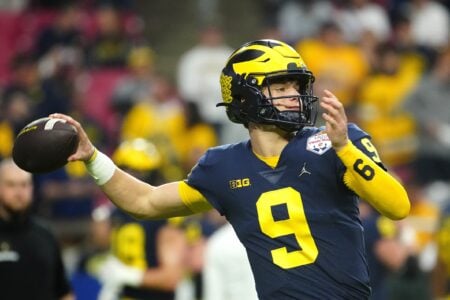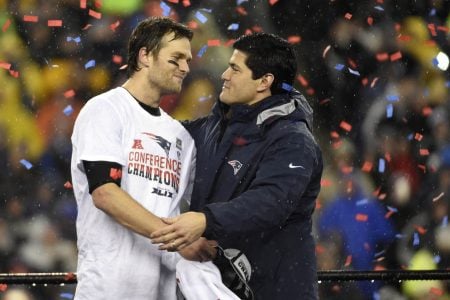I can understand if that is a rule-of-thumb common practice, but the way you say it implies it's an offical rule. And I can't find that rule (using the rulebook Miguel posted). In fact, the rule below seems to contradict you. The only possible allowance I can see for running into a kicker who is too close to the line would be (b), "caused by the kicker’s own motions", and I can't see how a kicker 5 or 6 yards behind the line of scrimmage would necessarily fall under that provision. Searching the entire document for "seven yards" and "7 yards" yields nothing.
Rule 12, Section 2.
Article 6 No defensive player may run into or rough a kicker who kicks from behind his line unless such contact:
(a) is incidental to and after he has touched the kick in flight;
(b) is caused by the kicker’s own motions;
(c) occurs during a quick kick;
(d) occurs during a kick or after a run behind the line;
(e) occurs after the kicker recovers a loose ball on the ground; or
(f) is caused because a defender is blocked into the kicker.
Penalty: For running into the kicker: Loss of five yards from the previous spot, no automatic
first down. (This is not a personal foul). For roughing the kicker or holder, loss
of 15 yards from the previous spot. (This is a personal foul, and also disqualification
if flagrant).
SUPPLEMENTAL NOTES
(1) Avoiding the kicker is a primary responsibility of defensive players if they do not touch the
kick.
(2) Any contact with the kicker by a single defensive player who has not touched the kick is running into the kicker.
(3) Any unnecessary roughness committed by defensive players is roughing the kicker.
Severity of contact and potential for injury are to be considered.
(4) When two defensive players are making a bona fide attempt to block a kick from scrimmage
(punt, drop kick, and/or placekick) and one of them runs into the kicker after the kick
has left the kicker’s foot at the same instant the second player blocks the kick, the foul for
running into the kicker shall not be enforced, unless in the judgment of the Referee, the player
running into the kicker was clearly the direct cause of the kick being blocked.
(5) If in the judgment of the Referee any of the above action is unnecessary roughness, the penalty
for roughing the kicker shall be enforced from the previous spot as a foul during a kick.
A. R. 12.13 Kicker A1 in punt formation muffs a snap. He recovers on the ground and then kicks. A1 is run
into, blocked, or tackled by B1 who had started his action when A1 first recovered.
Ruling: Legal action by B1.
A. R. 12.14 A1 receives a snap. He starts to run but after a few strides, he kicks from behind his line. As A1
kicks, he is tackled or run into.
Ruling: The kicker is to be protected, but the Referee should use his judgment when ordinary
line play carries an opponent into such a kicker or at any time when it is not obvious that a kick
is to be made (quick kick).
A. R. 12.15 Fourth-and-12 on B30. On a field-goal attempt which is not good, receiver B1 runs into the kicker
without touching the ball.
Ruling: A’s ball fourth-and-7 on B25. Running into the kicker. If the field goal had been good,
no penalty would be enforced on the succeeding kickoff, since it was not a personal foul.

















